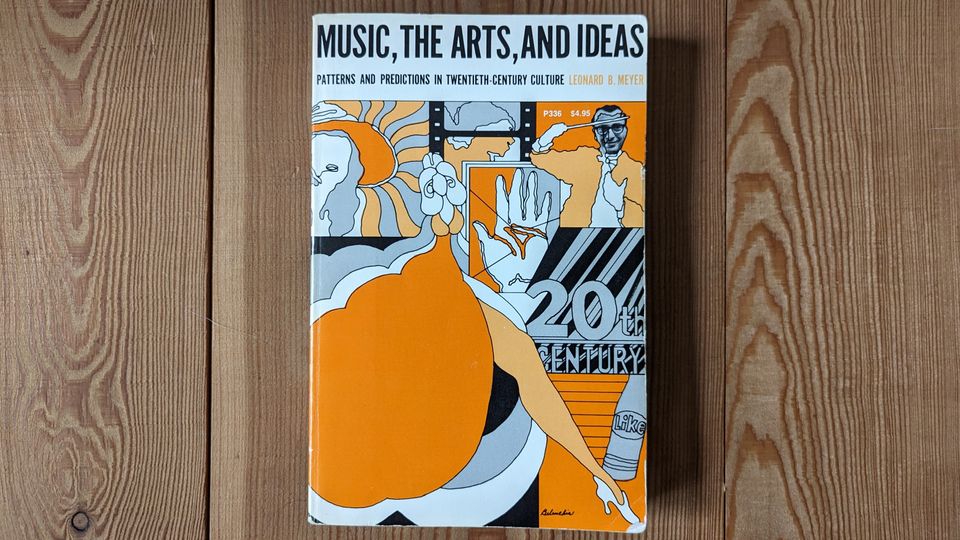21st Century Culture: Boring or Static? (Or both?)

Whether the 21st century ecosystem of pop culture is suffering from stasis is a separate question from whether its output adequately engages us
Promotional festivities for my new book (pre-order) began abruptly on Tuesday morning when New York Times opinion writer Michelle Goldberg named Status and Culture (pre-order!): “The Book That Explains Our Cultural Stagnation.” In the piece, Goldberg channels a widely-held fear about 21st century cultural stasis — perhaps first surfacing in Kurt Andersen's 2011 Vanity Fair piece on the absence of era-defining trends and more recently in Safy-Hallan Farah's eulogy for "The great American cool." Goldberg then links this feeling of stagnation to Christian Lorentzen's recent writing about boredom with contemporary culture. Many elite media consumers complain that our big pop moments are conventional, repetitive, and dull.
The Goldberg piece generated 1,200+ comments, many of which offer a legitimate dissent: How can 2022 pop culture be boring when there is so much stuff? If you don't like the Marvel Cinematic Universe, there are an infinite number of other options. Have bored people watched all the films on the Criterion Channel or every full season of prestige TV?
Chapter Ten of Status and Culture does indeed offer a detailed explanation for what is causing these feelings of cultural stasis, but I want to state for the record that I don't believe that everyone is bored. Marvel, Star Wars, Beyoncé, Taylor Swift, and League of Legends have only achieved such popularity because millions love them. Teens spend their days watching an endless stream of TikTok videos, only to open up the app again the next morning. Boredom is a completely subjective and personal measure. My boredom is not proof of your boredom.
The idea of cultural stasis, however, is something we can measure in more objective terms. The film Back to the Future constructs its entire comedy on the vast cultural differences between 1955 and 1985. And had the DeLorean skipped through space-time at five-years intervals, Marty and Doc would have found drastic stylistic changes overtaking Hill Valley in 1960, 1965, 1970, 1975, and 1980, as well. We can't say the same thing about the last 30 years. Traveling back to 1992 may offer some vague aesthetic differences, but they feel less extreme than 1955-1985, especially when we chart changes at five-year intervals. Does The Social Network — a film from 12 years ago — feel as different to 2022's Netflix offerings as The Birds (1963) feels to Jaws (1975)?
Perhaps we shouldn't be too concerned about this. Taking the longest view of human civilization, cultural stasis is much more common than intense change. Music scholar Leonard B. Meyer writes, "The history of China up to the nineteenth century, the stasis in ancient Egypt, and the lack of cumulative change in countless other civilizations and cultures make it apparent that stability and conservation, not change, have been the rule in the history of mankind generally." We worry about cultural stasis only because we remember the dynamism of the 20th century, a time in which we used stylistic change to mark the passage of time. By this measure, 2012 being indistinguishable from 2017 makes us feel adrift. But does cultural stasis make everyone bored? We have access to all things from all eras for daily entertainment. In the last month, I have enjoyed listening to The Feelies’ Crazy Rhythms, watching The Rehearsal, and reading The Guns of August.
The enigma of 2022 is simply this: How can we both live in an infinite reservoir of entertaining culture and also feel a sense of stasis? The answer can be found in the aforementioned Leonard B. Meyer's 1967 book, Music, The Arts, and Ideas (which I highly recommend):
"For stasis, as I intend the term, is not an absence of novelty and change — a total quiescence — but rather the absence of ordered sequential change. Like molecules rushing about haphazardly in a Brownian movement, a culture bustling with activity and change may nevertheless be static." (102)
Meyer’s thesis is that our sense of “progress” requires a clear historical narrative of one style replacing another (Neoclassicism → Romanticism → Realism → Impressionism), and the postmodern “everything goes" state of culture prevents us from feeling any momentum.
That being said, the most educated cultural consumers do seem to be dissatisfied with contemporary pop culture. As a Hollywood friend mused, "Everything is good, and nothing is great." In the last few decades, mass culture successfully neutralized the constant aesthetic challenge of indie avant-garde experimentation, either by delegitimizing it as pretentious or quickly absorbing and defusing its innovations. The internet meanwhile promised to be weirder, more niche, and more interesting, and yet the zeitgeist is anchored to mega-moments, rehashed reboots, and lowest common denominator viral content. New culture also seems weak in its failure to devalue older culture the way that Bob Dylan and The Beatles instantly outmoded previous decades of jazz. Does Olivia Rodrigo make Avril Lavigne unlistenable or sound even more vital?
My book's explanation for this is that (1) status value was always key to the appeal of avant-garde and indie culture, and (2) the internet conspires against providing such content with status value. In the ensuing vacuum, the mass media and elite consumers spend their energy engaging with mass culture, which is more likely than niche content to be conventional. And mass culture, by definition, lacks cachet. The most savvy consumers will always desire pop culture that both breaks conventions and offers a sense of cool, and today's mass hits rarely do either.

Other takes on the topic:
Ryan Broderick’s Garbage Day: Our Frustrating Fandom Future
In a world where you can read, watch, or listen to anything, the act of consumption isn’t impressive. So now we reward each other for consuming the meta-text — the memes, the hashtags, the community drama, and the conspiracy theories. Not only does this help small communities canonize their own monocultures, but it also has led to larger mainstream institutions fracturing themselves into small subcultures to more effectively target community members.
Bob Lefsetz’s The Lefsetz Letter: What’s Cool
Used to be there were insiders and outsiders. Hipsters and the hoi polloi. The hipsters were there first, oftentimes what they were into broke through to the mainstream, sometimes it did not. But one thing was for sure, the hipsters lorded their dedication and knowledge over you. You weren’t aware of this? You’re listening to that crap? There were all kinds of bleeding edge phenomena that broke, and almost never instantly. The hipsters had to adopt it and it took years for the rest to catch on.
The death of journalism and exceptional journalists mean nothing is canonized anymore. Great art is made and forgotten
To which Taylor Lorenz replied:
Great art has never been memorialized in culture because of “journalism”. And things are memorialized all the time, u just forget abt them bc we don’t have a monoculture now thanks to the internet and faster and faster consumption/hype cycles constantly surfacing new art etc 😌
I do think journalists play some role in the canonization process, but not as much as critics, curators, academics, and historians. As Lorenz says, the "death" of journalism is not the key factor: the speed/quantity issues inherent in internet culture are bad for canonization. That being said, the anti-snobbery of media critics in recent years, which may derive from egalitarianism, also plays a role in shifting the focus to mega-hits.
